Scars
Below is a description of what happens in each phase of the wound healing process.
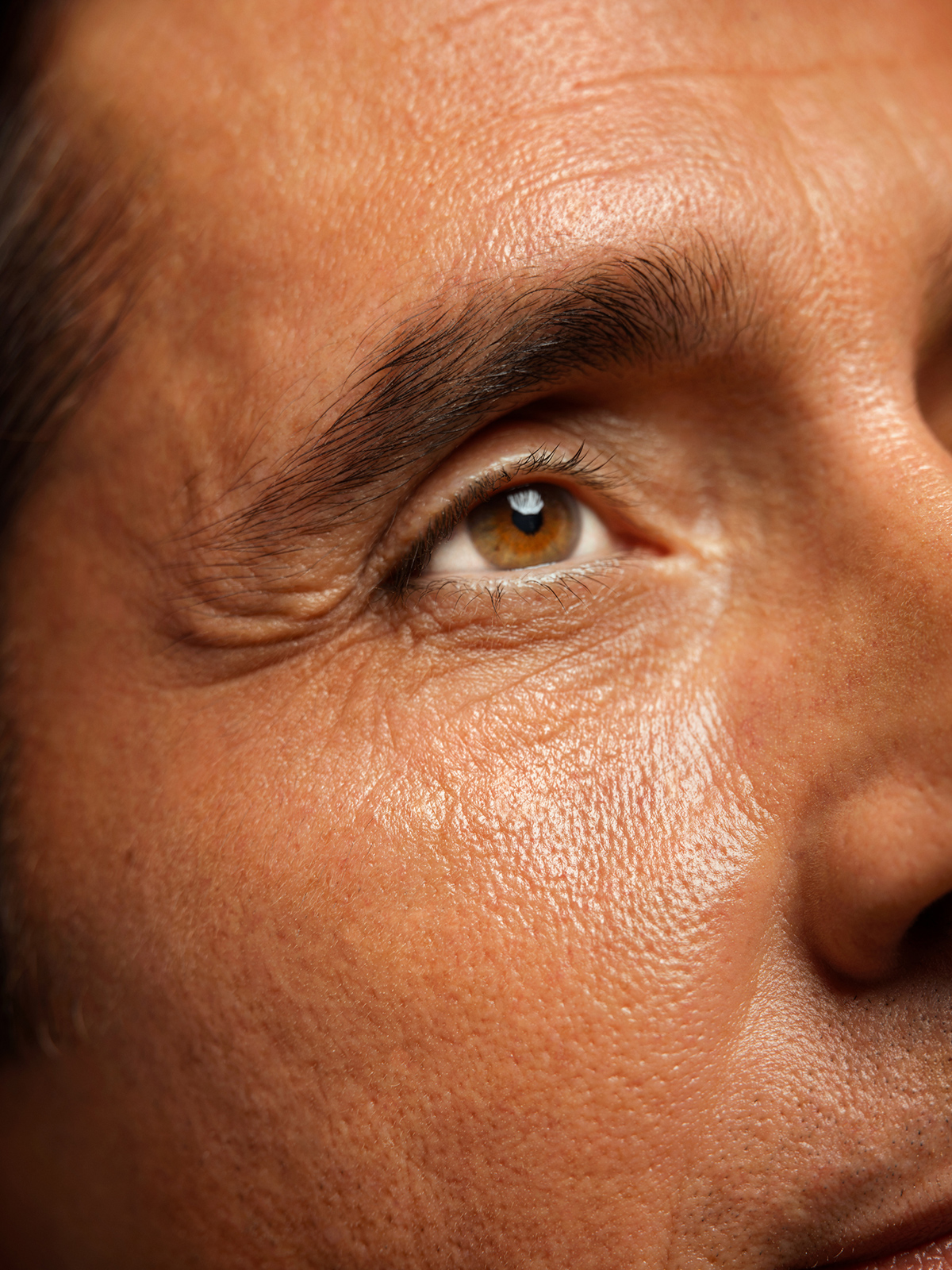
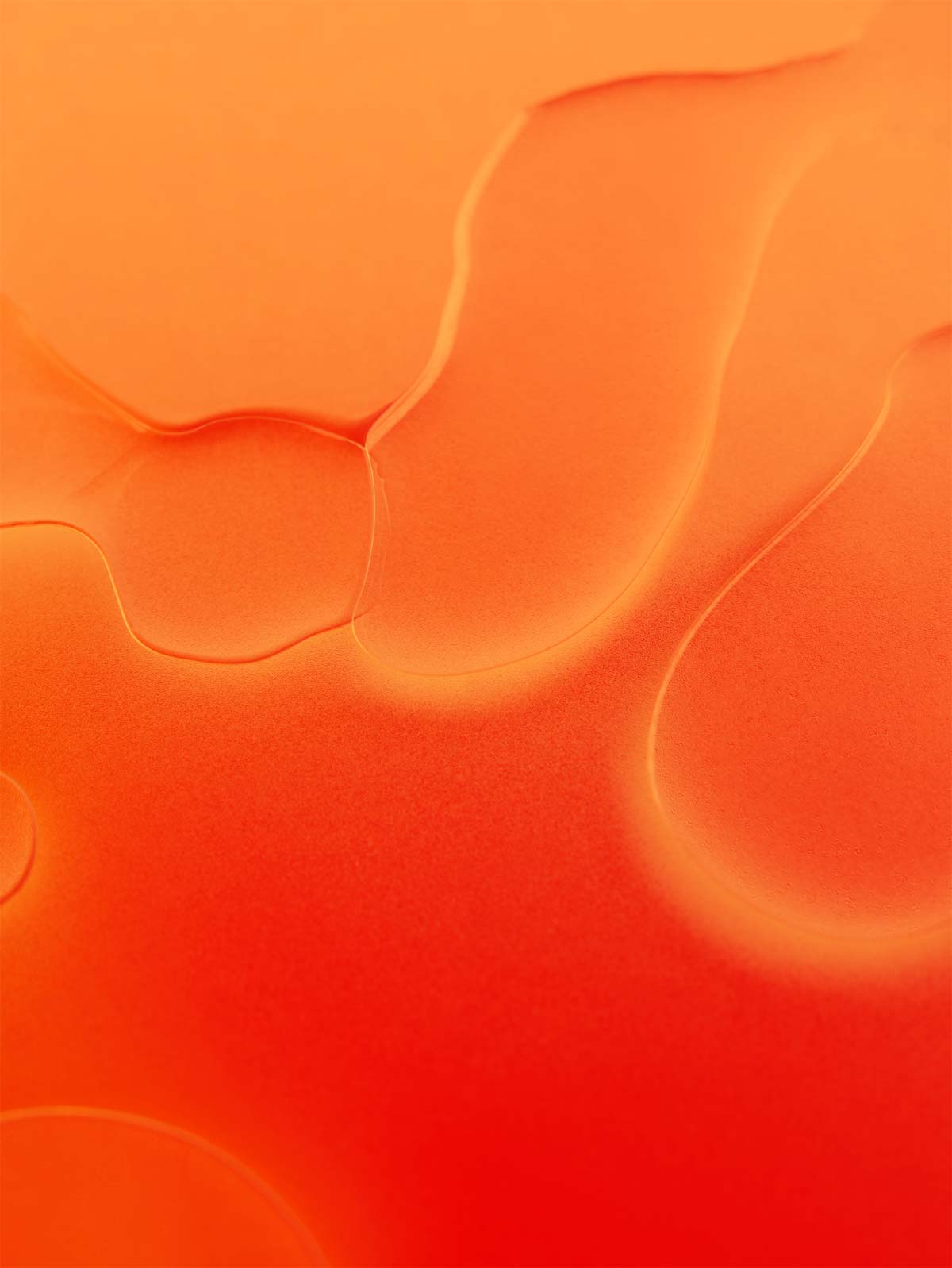
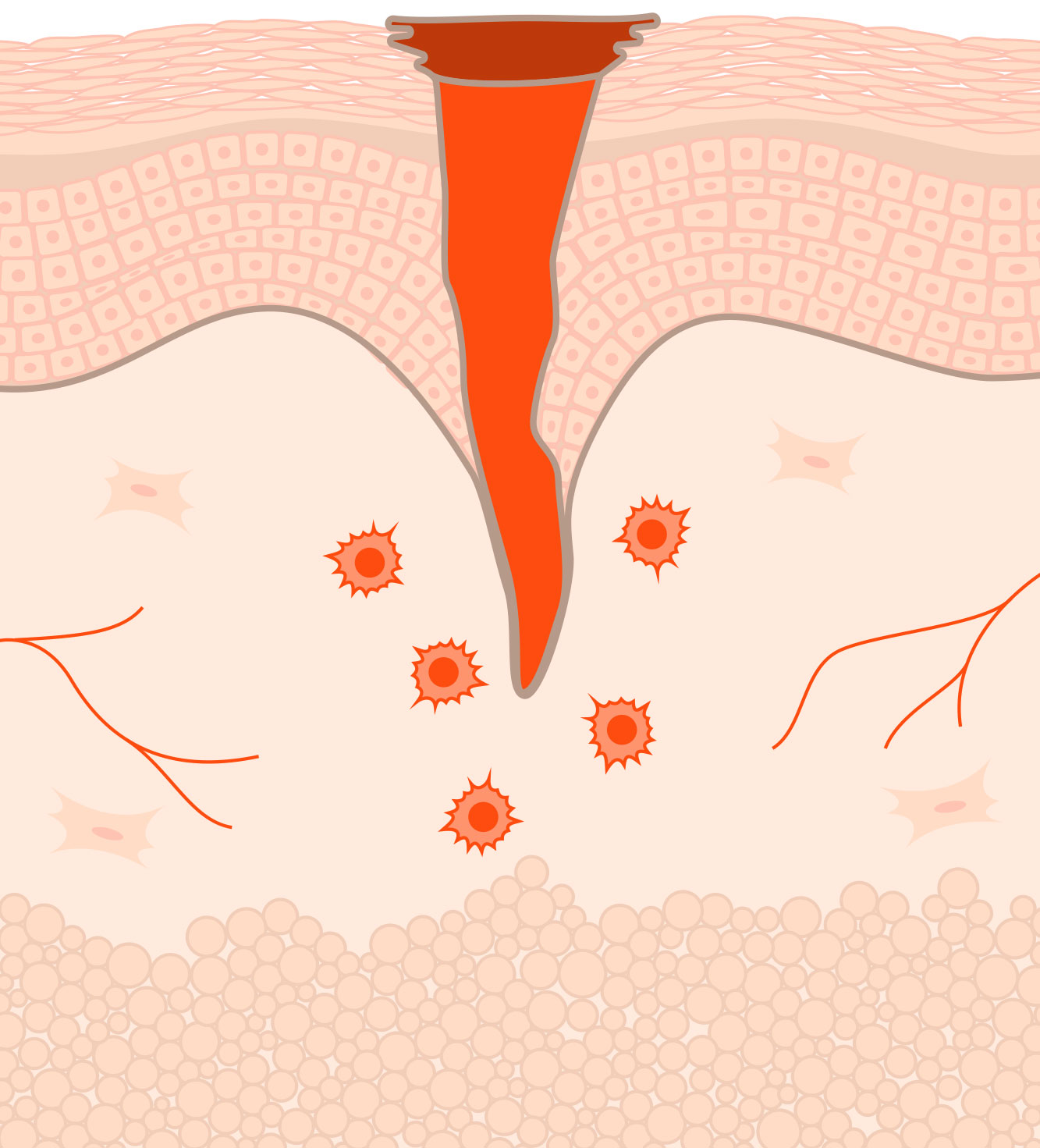
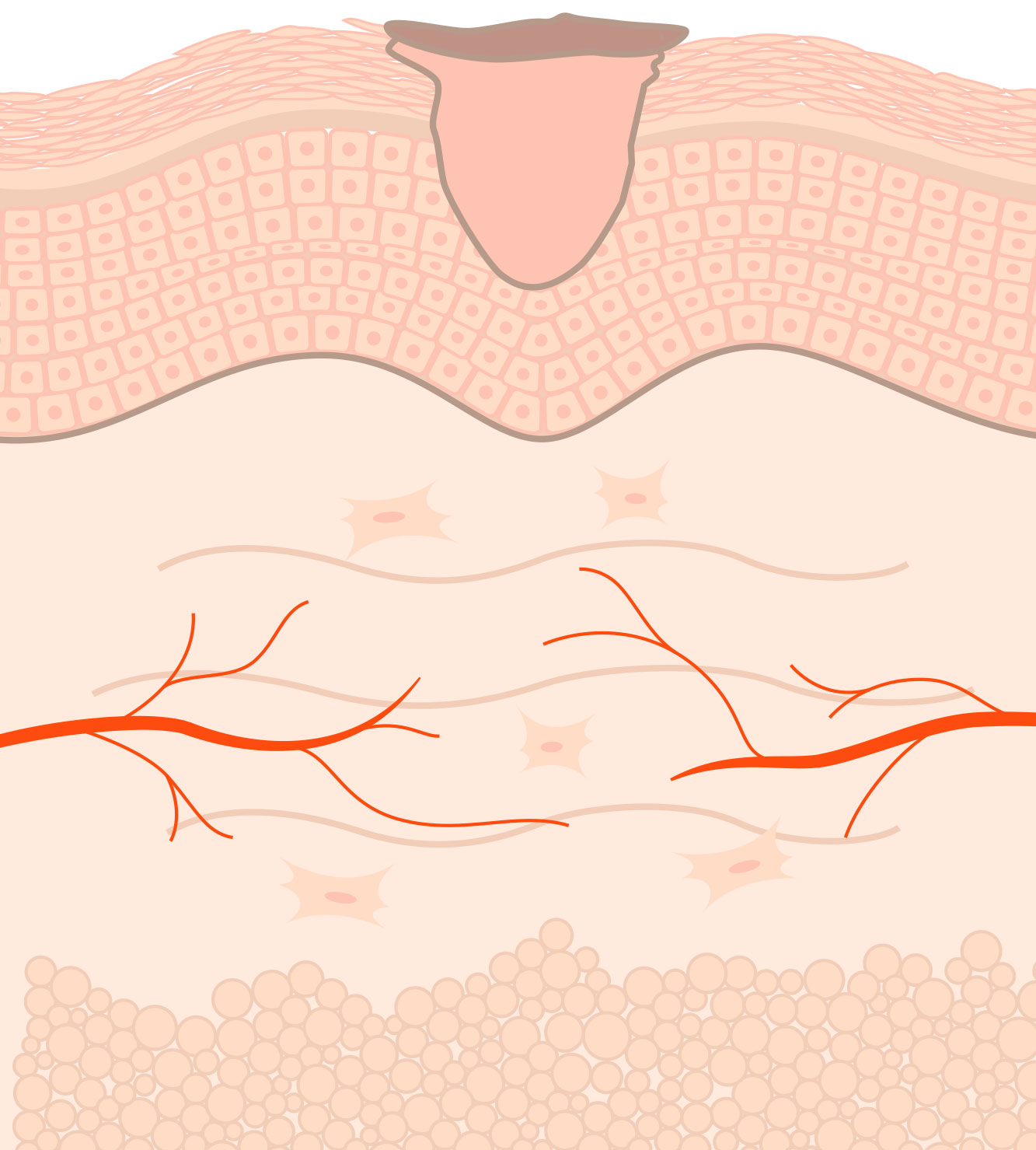
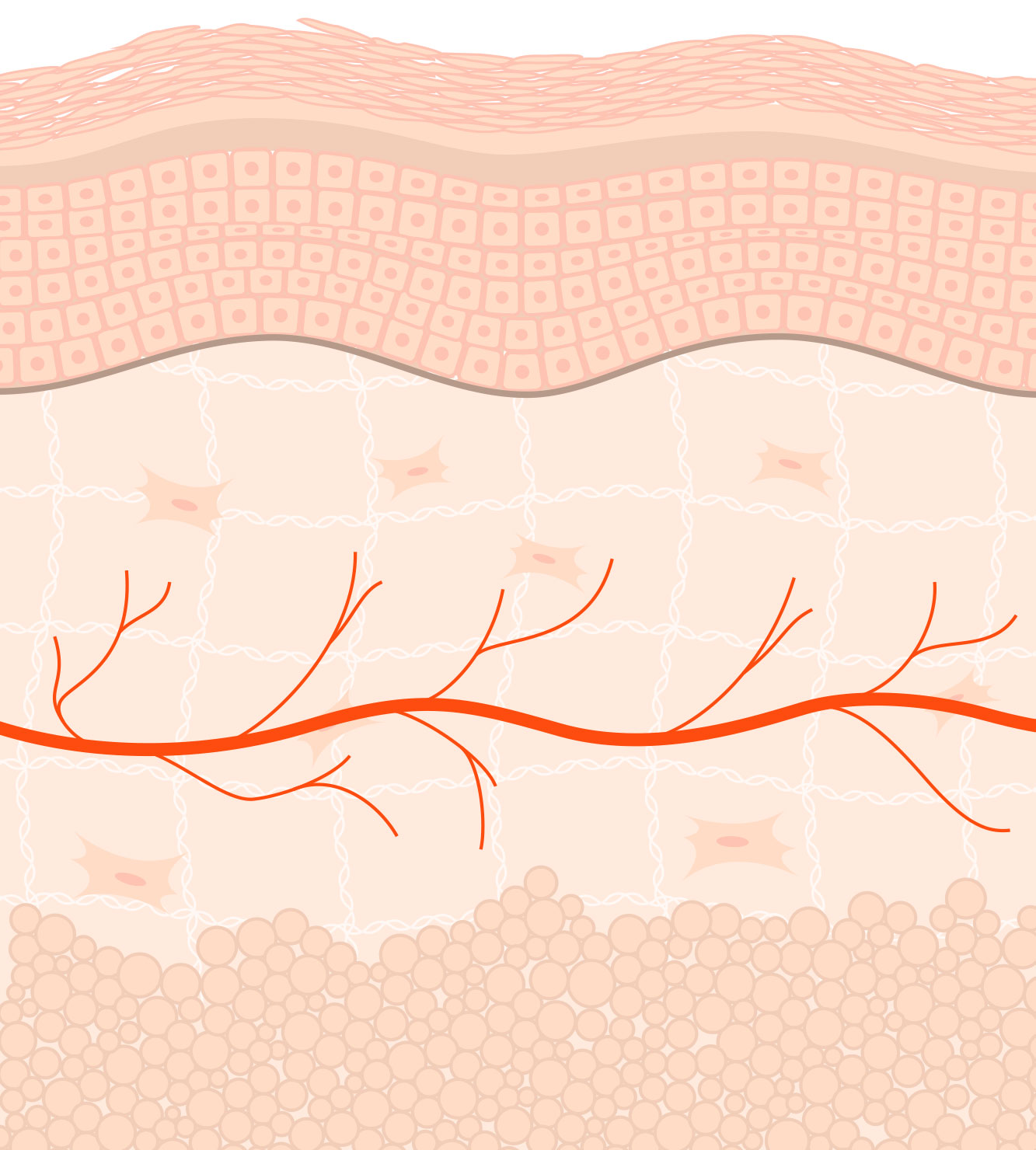
An active scar is typically reddish and slightly raised from the rest of the skin. Active scars are not just unsightly. Many people find the functional properties such as itchiness, and feelings of tingling and tightness to be even more disturbing. The healing processes that can be influenced by Tience continue in scars that are still in their active phase. Tience treatment aims to alleviate both functional disadvantages and make the scar less noticeable. Results typically become visible within months and vary from person to person. With Tience, the skin has access to the bioactive substances necessary for optimal scar remodeling.
Tience treatment can be used to treat surgical scars, for example in connection with stitch removal, or for general use with scars in which healing has not progressed as desired.
It should be noted that mature scars (light, smooth scars) typically do not have healing processes, so Tience is not expected to have a significant effect on their fading or functionality.
When acne heals, the body tries to repair the damaged skin with collagen and elastin. If too few of these building materials are produced during healing, depressed acne scars are created.
Tience treatment has shown promising results in the treatment of acne scars on the face. Tience has been found to increase the skin’s own collagen and elastin production many times over. This is especially important in the treatment of acne scars, where the scar was originally formed due to insufficient collagen and elastin production.
In the treatment of acne scars, Tience can be administered under each scar in conjunction with the release of scar fibers to create an optimal environment for the healing of the acne scar. Tience can also be administered in conjunction with microneedling or laser treatment of acne scars to improve the outcome of the treatment. The results of the treatment will develop after several months of treatment and may differ from one patient to the next. Tience affects the function of each person’s own skin in a specific way.
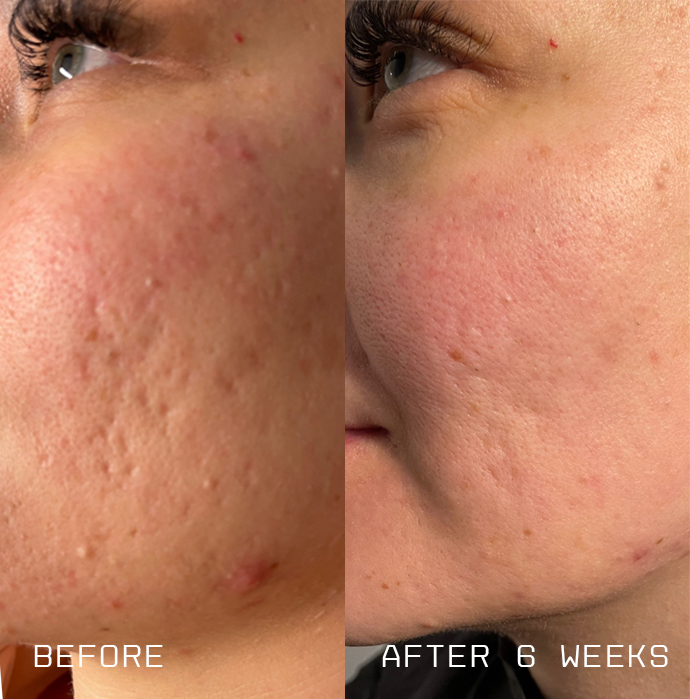
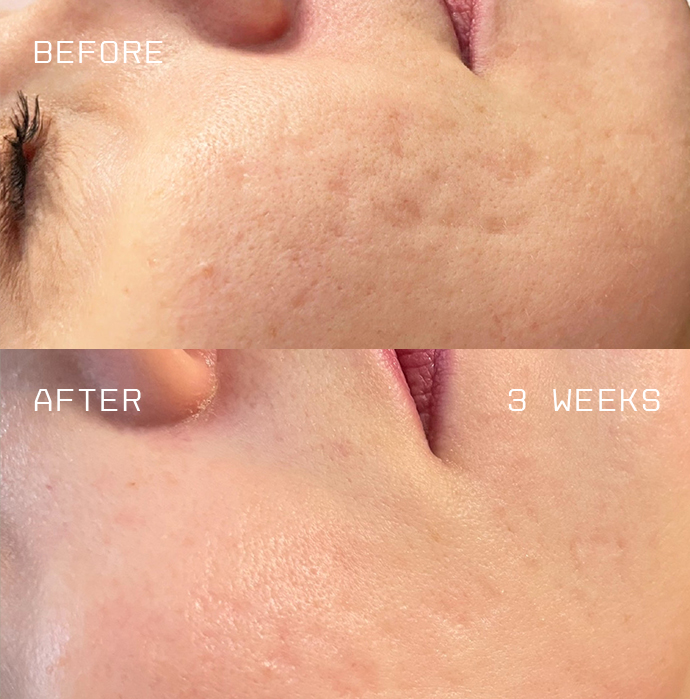
Tience has been shown to increase the production of structural proteins in human skin cells in studies conducted on human cells. Structural proteins play an important role in improving the vitality of the skin and strengthening the skin’s most important function, acting as a protective layer for the body. Activated connective tissue cells increase the production of collagen, elastin and hyaluronic acid in the skin.
It should be noted that mature scars typically do not undergo healing processes, so Tience is not expected to have a significant effect on their fading.